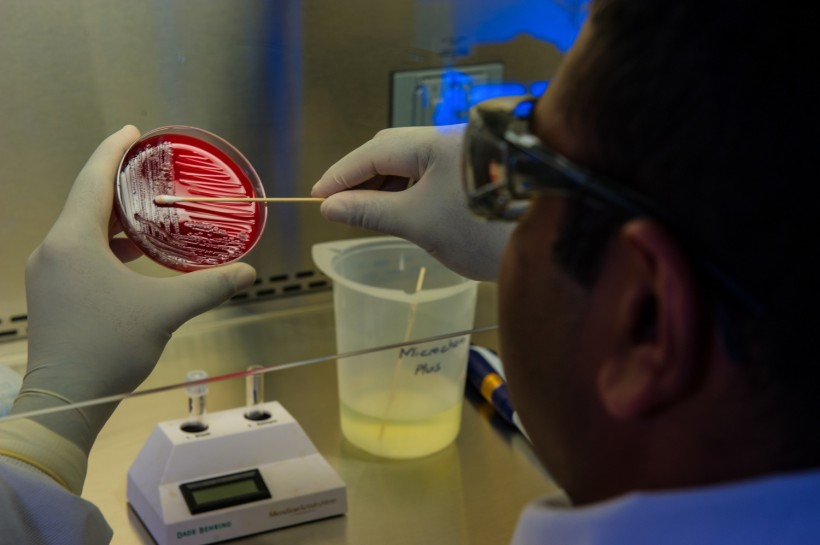University of South Australia (UniSA) scientists recently reported a surprising discovery regarding the origins of the antibiotic-resistant genes that were previously thought to be confined in Adelaide. The gene was first discovered in 2006 that is carried by the nasty bacterium Pseudomonas aeruginosa is an organism responsible for thousands of deaths due to its resistance to antibiotics.
The full findings of their study, titled "Worldwide Distribution and Environmental Origin of the Adelaide Imipenemase (AIM-1), a Potent Carbapenemase in Pseudomonas Aeruginosa Open Access," is published in the journal Medical Genomics.

This photograph depicted an Enteric Diseases Laboratory Branch (EDLB) public health scientist preparing foodborne bacteria for a DNA fingerprinting test.
Antibiotic-Resistant Gene Jumped From a Harmless Organism to a Nasty Bacterium
Pseudomonas aeruginosa is highly known for being resistant to antibiotic drugs and causing the deaths of immunocompromised, surgical, and burn patients. It carries a gene that makes it resistant to even the most potent antibiotics, such as imipenem and meropenem.
The World Health Organization (WHO) has listed the nasty bacterium as a "critical priority pathogen" that is one of the dozen families of bacteria that could threaten human health.
According to SciTech Daily, experts believed in the past that the gene was only found in Adelaide, the capital of South Australia. But clinical samples and healthcare-associated wastewater showed that the Adelaide Imipenemase (AIM-1) gene could also be found in other areas.
UniSA microbiologist Professor Rietie Venter led a group of scientists to gather evidence of the gene worldwide, wherein they found it could have originated in a harmless environmental organism that can be found in the soil, wastewater, groundwater, and even in plants.
That means the gene could have been mobilized at some point and jumped from a harmless organism to a pathogen that has caused the deaths of thousands of people. Associate Professor Venter said that the bacteria is an opportunistic pathogen that is very resilient.
ALSO READ: Bacteria on Hedgehog Developed Antibiotic Resistance in Response to Natural Skin Fungus
How Did the Gene Jump From a Harmless Organism to a Nasty Bacterium?
According to a news release from the university, the team used innovative ways to characterize antibiotic resistance and track them through wastewater analysis. They found that the AIM-1 gene can be found in the wastewater sample and river water in Adelaide and South Australia, suggesting a wider gene spread than experts have expected.
"We then investigated the possibility of the global distribution of the AIM-1 gene. Through extensive nucleotide and protein database searching, we discovered the gene was also present in Asia, North America, and Europe," the researchers said in the news release.
They explained that the jump from the relatively harmless environment to a pathogenic bacteria is highly likely because they have evolved in unknown organisms before making their way to dangerous pathogens, such as P. aeruginosa, which can be found living among harmless environmental organisms.
For now, the team is carefully monitoring the AIM-1 gene to better understand why genes jump from the environment into human pathogens. This method can help scientists find ways to prevent it from happening more often.
RELATED ARTICLE: Microplastics Act As Breeding Ground for Antibiotic-Resistant Bacteria, Study Reveals
Check out more news and information on Antibiotic Resistance in Science Times.














